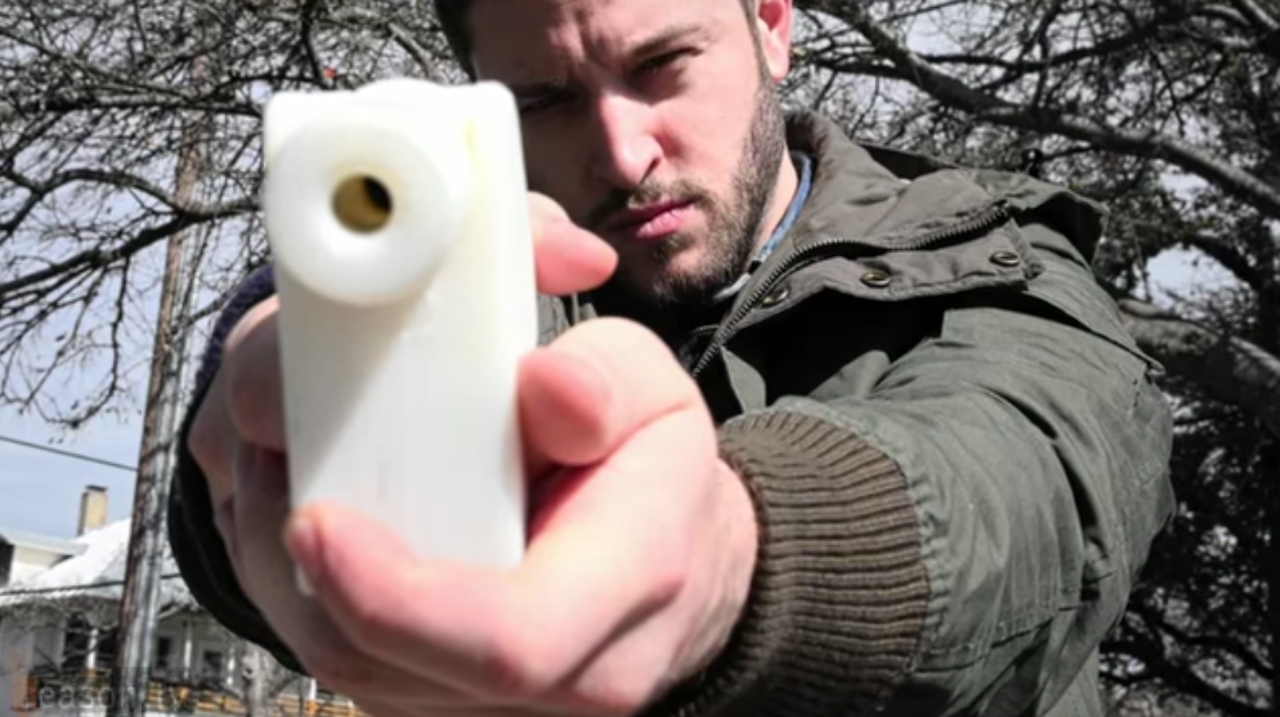Back in May 2013, a nonprofit called Defense Distributed, run by a Texas law student named Cody Wilson, released the digital design files for a stubby 3D printed pistol called the “Liberator.”
The Liberator was a fully functioning pistol that cost $25 in materials for those with access to a 3D printer.
It made a big splash. The concept of printing a firearm at home was alarming enough that the State Department intervened, demanding that the files be removed on the grounds that they violated the US Arms Export Control Act. The files were removed, then showed up on BitTorrent, and the affair set off a minor moral panic. A Homeland Security memo warned that restricting access to such weapons “may be impossible.” Philadelphia banned them outright. Gizmodo declared that plastic guns “aren’t just toys anymore.”
Designs for 3D printed firearms have proliferated online in the nearly four years since, but those fears about the technology have yet to materialize. In fact, though there have been a few cases in which police have seized 3D printed guns, we were unable to locate a single example of such a weapon having been used to commit a violent crime.
There are a few reasons for that, said Matt Stultz, the digital fabrication editor for the magazine Make: (where I edit a weekly newsletter). The main one: The type of 3D printed gun you can make at home just isn’t very impressive.
“We’re almost back in the muzzleloader days,” Stultz said, noting that in many cases you need to pry the spent cartridge out with pliers after each shot. “Yes, they’re dangerous and they work, but they’re not what we think of as a modern-day firearm.”
It even turned out that the Liberator was prone to exploding when fired.
That’s not to say enthusiasts aren’t working on the next generation of 3D printed guns. A group called FOSSCAD maintains a Github repository of designs for pistols, rifles, and even grenades and ammunition — but though Stultz has been impressed by some of the designs, he suspects that the technical capabilities of desktop 3D printers just aren’t up to the job of printing a reliable gun out of plastics. “I could make a better firearm out of parts I bought at Lowe’s," Stultz said.
“I could make a better firearm out of parts I bought at Lowe’s.”
What’s more worrisome, according to Stultz, are the tinkerers who are working within the constraints of existing laws to fabricate off-the-books guns. Cody Wilson, for instance, the law student behind the Liberator, later developed the Ghost Gunner, a specialized milling machine that can complete an unfinished “lower receiver” for an AR-15 rifle — resulting in a gun with no serial number.
In the future, we may also have to contend with metal 3D printing being used to make a weapons. Using a million-dollar sintering laser printer, Californian custom manufacturing outfit Solid Concepts created a stainless steel version of John Browning’s M1911 pistol.
Any technology to fabricate a firearm would have to become extraordinarily cheap to compete with street guns, Stultz said. However, with patents on metal 3D printing starting to expire, metal 3D printers could experience the same precipitous fall in price as plastic printers.
“The genie’s already out of the bottle,” Stultz said. “This Github repository has been out for years. What’s the government going to do, say it’s illegal? They’ll take it to the darknet.”
